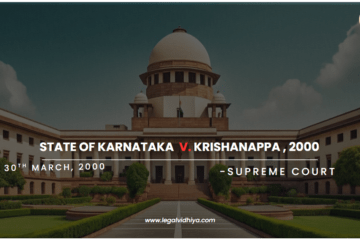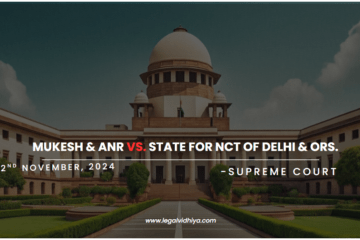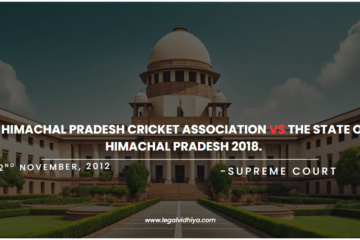
INTRODUCTION
On January 26, 1950, the Indian Constitution came into effect, bringing with it the special clause known as Article 370 that grants Jammu and Kashmir a special status. The article, which exempts the State of Jammu and Kashmir from all provisions of the Indian Constitution save for Articles 1 and 370, was added on October 17, 1949. Additionally, the Article grants the State the authority to write its own constitution, and the Parliament’s ability to pass laws for the State of Jammu and Kashmir was constrained.
For the items included in the Union List to be implemented, the State Government’s consent was required due to Jammu and Kashmir’s unique legal system and constitution. Therefore, if the State Government criticises Jammu and Kashmir, the laws passed by the Parliament that applied to all of India do not. The State forbade Indian citizens who were not permanent residents from purchasing real estate there.
Article 370 was repealed by the Indian government on August 5, 2019. The Indian Constitution’s provisions on citizenship, property ownership, fundamental rights, directive principles of state policy, and fundamental duties are now applicable to all Jammu and Kashmir and Ladakh residents. The State of Jammu and Kashmir no longer has a special status as a result of the abrogation.[1]
The Indian Constitution’s Article 370, however, continues to be a source of debate as seen by a number of Supreme Court decisions. The Supreme Court ruled in Prem Nath Kaul v. State of Jammu and Kashmir[2] that Article 370 is only temporary in character. On the other hand, the Supreme Court acknowledged Article 370 as a permanent clause granting the President perpetual power to govern the relationship between the Union and the State in the case of Sampat Prakash v. State of Jammu and Kashmir
On March 2, 2020, the Shah Faesal v. Union of India lawsuit reached a conclusion that reconciled the opposing viewpoints in the aforementioned cases. Since there was no overlap between the two instances, the Supreme Court in this instance dismissed the request to refer these petitions to a bigger bench.
FACTS OF THE CASE
The Indian Constitution was amended to include Article 370, which grants the State of Jammu and Kashmir a unique level of autonomy. According to this Article, the State was granted the right to adopt its own Constitution and the Indian Parliament’s laws may only be applied to the State with the approval of the State Government of Jammu and Kashmir.
However, Article 370(3) of the Indian Constitution also gives the President of India the authority to amend or repeal Article 370. Using this authority, the President of India declared Article 370 inoperative on August 5, 2019. The Indian Constitution is now enforceable in Jammu & Kashmir, just like it is in all other Indian States, according to the President’s Constitutional Order.
Mr. Raju Ramachandran, a seasoned senior counsel, has argued against the constitutionality of the aforementioned directives.[8] The senior attorneys Dinesh Dwivedi and Sanjay Prakash, however, expressed dissatisfaction with the Supreme Court’s decision in the case of Sampat Prakash v. State of Jammu and Kashmir (1969 AIR 1153) because it disregarded the facts established in Prem Nath Kaul v. State of Jammu and Kashmir (1959 AIR 749), which is connected to Article 370. They had argued that such an omission required a reference to a larger bench because the current one had the same strength as the benches of Sampath Prakash and Prem Nath Kaul and was thus unable to settle any disputes between these two.
ISSUES RAISED BEFORE THE COURT
When can a case be handed over to a larger bench?
Whether there is a need to transfer the case to the larger bench owing to the contradictory views in the cases, namely, Sampat Prakash v. State of Jammu and Kashmir (1969 AIR 1153) and Prem Nath Kaul v. State of Jammu and Kashmir (1959 AIR 749)?
Whether the case of Sampat Prakash v. State of Jammu and Kashmir is per incuriam for not considering the judgement laid down in the case of Prem Nath Kaul v. State of Jammu and Kashmir?
ARGUMENT FOR PETITIONER
The petitioner’s learned attorney opposed the reference, arguing that the case of Sampat Prakash v. State of Jammu and Kashmir should not be considered per incuriam because the facts of the two cases were different and that the case should be interpreted in light of those facts rather than the judgement in Prem Nath Kaul v. State of Jammu and Kashmir.
The experienceed attorney claimed that there was no connection between the two cases’ contexts. State of Jammu and Kashmir v. Prem Nath Kaul, the court focused on the Yuvaraj’s legislative authority rather than the specifics of Article 370.
ARGUMENT FOR RESPONDENT
Senior advocate with knowledge In the case of Prem Nath Kaul v. State of Jammu and Kashmir, it was unambiguously established that under Article 370, the parliamentary and presidential powers were subject to the recommendation of the Jammu and Kashmir Constituent Assembly. Mr. Dinesh Dwivedi, representing the respondent, was satisfied that the case should be referred to the larger bench. After the Assembly was dissolved, its powers ceased to exist. Despite this, once the Constituent Assembly was dissolved, a Presidential Order was approved in the matter of Sampat Prakash v. State of Jammu and Kashmir under Article 370. The attorneys had contended that this resulted in an unresolvable disagreement between these two rulings
He claimed that in the cases Prem Nath Kaul v. State of Jammu and Kashmir (1959 AIR 749) and Sampat Prakash v. State of Jammu and Kashmir, two equally weighted benches of five judges reached strange conclusions regarding Article 370. (1969 AIR 1153). He claimed that whereas Prakash had come to the conclusion that Article 370 was permanent in nature, Kaul had argued that Article 370 was only relevant up till the J&K Constitution was passed.[12]
In the case of Prem Nath Kaul v. State of Jammu and Kashmir, the Court, after extensively discussing the historical background and objective behind the introduction of Article 3, argued that the previous judgement should always be binding on the subsequent Benches of the same strength.
Additionally, it was claimed that in the case of Mohd. Maqbool Damnoo v. State of Jammu and Kashmir, the interpretation of Article 370 established in Prem Nath Kaul v. State of Jammu and Kashmir was disregarded. The Court in this instance did not make it clear whether Article 370 would continue to apply following the adoption of the Jammu and Kashmir Constitution.
While there is no direct conflict between the aforementioned two five-judge Bench decisions of Prem Nath Kaul v. State of Jammu and Kashmir and Sampat Prakash v. State of Jammu and Kashmir, learned senior advocate Mr. Zafar Shah made the following argument on behalf of the Jammu and Kashmir High Court Bar Association
While there is no direct conflict between the aforementioned two decisions of the five-judge Bench in Prem Nath Kaul v. State of Jammu and Kashmir and Sampat Prakash v. State of Jammu and Kashmir, learned senior advocate Mr. Zafar Shah, speaking on behalf of the Jammu and Kashmir High Court Bar Association, argued that a reference was necessary. However, if it is decided in the Prem Nath Kaul case that Article 370 is just transitory, then the subsequent Sampat Prakash ruling is in conflict.
A request was made to refer the case of Shah Faesal v. Union of India to a larger bench in light of the decisions rendered in the cases of Prem Nath Kaul v. State of Jammu and Kashmir and Sampat Prakash v. State of Jammu and Kashmir.
JUDGEMENT
The Court emphasised that the bench should take the case’s facts and context into account before reaching a decision since they must be observed before a case can be decided. The Court was asked in Prem Nath Kaul v. State of Jammu and Kashmir (1959 AIR 749) if the Yuvaraj had the necessary legislative expertise before passing a certain statute
The Court further stated that any decree issued by the Maharaja of the State acting on the advice of the Council of Ministers that was in office as of the Maharaja’s proclamation date on March 5, 1948, prior to the formation of the Constituent Assembly, would be subject to review by the Constituent Assembly as specified in Article 370(2) of the Indian Constitution. The Prem Nath Kaul v. State of Jammu and Kashmir case therefore demonstrated the finality of the Constituent Assembly’s decision under Article 370(2).
The Constitution Bench in Prem Nath Kaul v. State of Jammu and Kashmir (1959 AIR 749) did not raise the question of whether or not Article 370 should continue to function after the Constituent Assembly was dissolved. But in the case of Sampat Prakash v. State of Jammu and Kashmir, the question of the continuation and termination of Article 370 was important. (1969 AIR 1153). The Court concluded that the two cases did not conflict as a result.
Prem Nath Kaul v. State of Jammu and Kashmir and Sampat Prakash v. State of Jammu and Kashmir are identical cases, hence the court’s conclusion that the request to have the matter sent to them is unfounded.
In underlining that there is no conflict between the two cases, Prem Nath Kaul v. State of Jammu and Kashmir and Sampat Prakash v. State of Jammu and Kashmir, the Court came to its conclusion and denied the request to refer the case to a larger bench. The Court further determined that there was no conflict between the aforementioned cases and that Sampat Prakash v. State of Jammu and Kashmir was not per incuriam.
CONCLUSION
Due to the conflicting opinions expressed in the instances of Prem Nath Kaul v. State of Jammu and Kashmir and Sampat Prakash v. State of Jammu and Kashmir, the Court in Shah Faesal v. Union of India was asked to refer the matter to a bigger bench. According to the Court, there is no conflict between the two instances because the facts and circumstances of the two cases are different and should not be referred to a larger bench.
In my view, the facts of the cases should be taken into consideration when passing judgment, and the Court’s decision in this matter is therefore acceptable.
Written by: Areeba Ahad




0 Comments